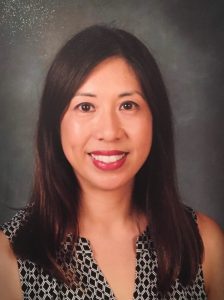Our son attends UC Santa Barbara (UCSB), about an hour and a half away from our home. He is anaphylactic to dairy, eggs, peanuts, tree nuts, sesame and shellfish — a challenging list to manage.
I remember that we were all very excited for him on the drive to school in July 2021, excited about the beginning of this new chapter in his life with all its possibility. He was headed to school earlier than most students, along with 200 other freshmen, to attend a Freshman Summer Start Program before the fall quarter began.
Our son had a 504 plan in place since 1st grade and we regularly updated his accommodations through high school. This helped us as we transitioned to college — we knew what accommodations he needed to feel safe, included, confident.
I also had our son advocate for himself more and more over the years. For example, he took the lead on communicating with the office of disability, housing and dining at UCSB.
When we visited the school before the freshman program began, we met with the dining hall manager who reassured me with his knowledge and experience with food allergies and cross contact. The university dietician then introduced us to their food allergy app ‘NetNutrition‘ that lists all the food ingredients for every entrée at each meal. I felt slightly relieved that the dining halls seemed more knowledgeable and cautious than many restaurants we’ve ventured our to over the years.
I felt we’d done all the right things to get ready for this huge step.
However, after saying our goodbyes and leaving him, I was beside myself with worry and anxiety. He’d only been gone two days and I was having panic attacks every time it was meal time for him. I couldn’t imagine not worrying every time he ate a meal.
I found that it was easier for me to keep the worries at bay when I was at work and busy. Weekends, though, when I had more time {too much time!} to think, were particularly tough. I think we all want our kiddos…ooops young adults… to be independent, smart about their food allergies, and healthy!
We just need to get through these big life transitions.
Here are some things I did to get myself through this transition and the letting go process:
I reached out for support
I posted in the FAACT Parents of High School and College Children Facebook Group, asking for support. I received over 100 replies to my post.
- The group generously shared their best practices and success stories.
- Beyond practical suggestions, the outpouring of kindness and virtual hugs reassured me that I was not alone in my worry and anxiety over my son’s transition to college.
Allergy moms are the best!
I replayed our due diligence steps in my head
I knew we’d done everything we could to prepare and assure a safe transition to this next stage in his life:
- We had equipped him with self-management skills since he was little, like advocacy, like carrying epinephrine everywhere, like reading ingredients labels.
- We’d navigated the university’s support system for students with food allergies, following his lead and supporting him along the way.
- We took advantage of technology, using the university’s food allergy app (NetNutrition) that provides quick access to menu item food ingredients. All the UC schools we toured seemed to have similar technology. Technology can definitely simplify allergic living at college.
- For the first few weeks, we agreed that he would text me after meals with an update. He wasn’t always great at this, but over time we found a rhythm that worked for us. He’d call with a quick daily check-in to tell me how his meals went. These short phone calls were incredibly reassuring as he got the hang of the dining halls and his food options. He was especially excited to share when he got to try new food safely. Hooray for nut-free, vegan dessert options!
- I do wish our son would wear his medic alert bracelet—he hasn’t worn it in years. That was a miss. I wish I’d been more insistent when he was younger, helping him to make wearing it a habit, just like always carrying his epinephrine AND ‘carrying two’.
I look back on our son’s Freshman year with severe food allergies and am reassured that he is in a good place as he begins his second year at UCSB. He has friends who are there for him if he needs them. His food allergy confidence and management skills have grown. He’s found his stride and is happy to be back on campus.
As for me, I am in a good place, too.
It IS true. Things do get easier once you’ve worked through the ‘new’ of a major life transition.
(and it doesn’t hurt to have food allergy moms in your corner when you need them. )
 |
Annemarie Levitt found warm hearted support from our community when her son with food allergies left for college. |
| About the Author: Annemarie is the mom of two young adults with food allergies. She lives in the Los Angeles area and is an elementary school teacher. Once a reluctant cook, food allergies have transformed her into a bold and adventurous, yet allergy-safe, home chef. | |
Images: Courtesy of Annemarie Levitt
Find guidance on ‘Empowering Kids with Food Allergies’ on the Allergy Force blog
- Loving by Letting Go, Part 1: The adolescent brain & the role of good food allergy habits.
- Loving by Letting Go, Part 2: Loving by doing a little less, plus the know-how your child needs to ‘own’ when they leave the nest.
- Loving by Letting Go, Part 3: Approaches for gradually empowering kids with food allergies in age appropriate ways.
Other helpful resources
- Don’t miss resources — on mindset & for empowerment — created by Feed Your Can.
- The ‘Exploring Food Allergy Families‘ podcast moderated by Tamara Hubbard, LCPC, (The Food Allergy Counselor) offers actionable advice in an easy-to-listen-to format.


